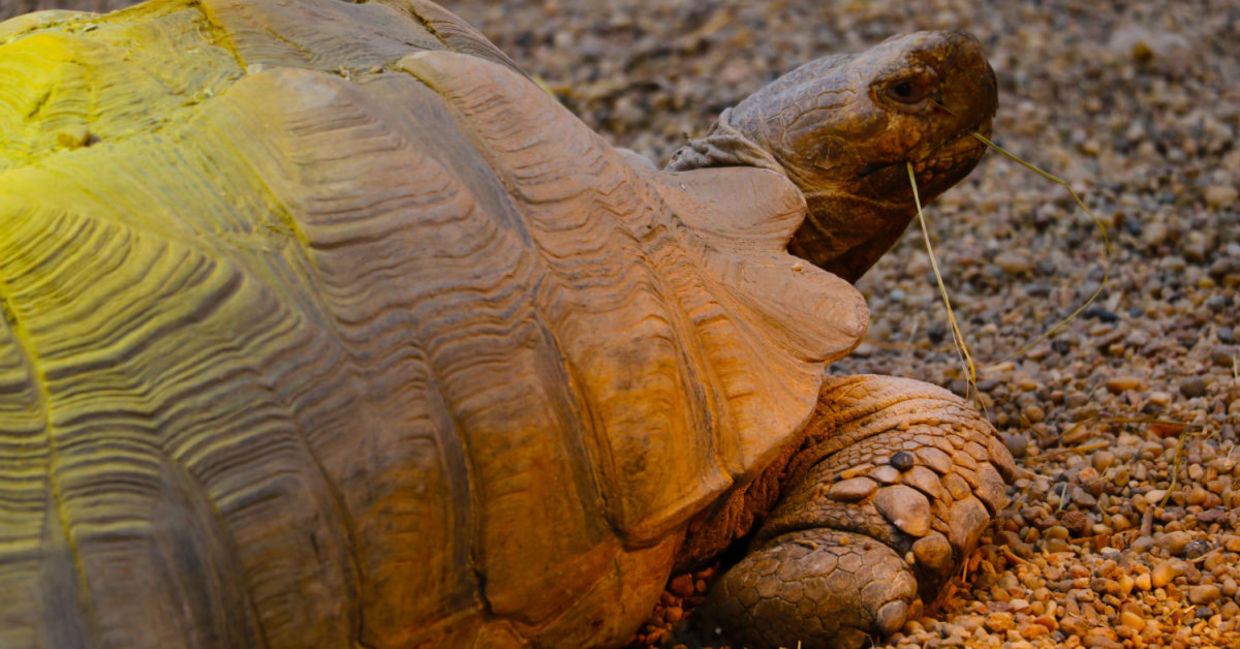
(kaskip / Shutterstock.com)
The Chicago River is a 150-mile long waterway that lazily meanders its way through the third largest city in the United States, Chicago. In the last several decades, the metropolis has undertaken extensive efforts to clean up the river, efforts that have borne fruit. Not only do vacationers enjoy kayaking, fishing, and sightseeing on the river, but the river’s native flora and fauna also appear to be flourishing within its banks. Proof of this was caught on camera by self-taught botanist Joey Santore who caught a video of a comically enormous common snapping turtle sunning itself on a riverside rock, according to Euronews.
View this post on Instagram
Chonkasaurus: a Chicago icon
Santore runs a popular botany-themed Youtube channel entitled “Crime Pays But Botany Doesn’t.” He went kayaking on the Chicago river with his buddy, Al Scorch, looking for interesting plants.
“We were just going to go out and survey for plant species that were popping up along the river, not anything that was planted, but what just pops up on its own in these highly disturbed and often polluted environments,” Santore told NBC News. “We started seeing a bunch of native species of turtle and were just checking out some of the animal life there.”
That’s when they chanced upon a surreal sight. A rotting pile of chains half-submerged in the water, and incredibly, a massively fat and large snapping turtle nonchalantly perched on top, sunning himself, reported NBC. Santore filmed the beast, narrating humorously in his midwest accent.
“You look good. I’m real proud of you. You’ve been eating healthy,” Santore joked in his video. “You ever heard of liquid salad? We’ve been doing that.”
Santore uploaded the video of the turtle, who he christened Chonkasaurus, to Twitter, where it went immediately viral, receiving nearly a million views. One commenter called the snapper “our new Chicago icon,” another considered it the “alpha predator of the Chicago River.”
Turtle centenarians
Another nature lover who saw the viral clip was turtle expert Jordan Gray. National Geographic reports that Gray estimated Chonkasaurus’s weight to be around 40 pounds. That’s significantly larger than the average common snapping turtle weight of 35 points, according to WBEZ.
Gray also told National Geographic that these turtles can live for more than 100 years. As far as Chonkasaurus’s age, it “appears to be an old male.” Gray explained. “I can tell just by the rounding of the snout and the wear on its carapace, or top shell.”
Gray explained that snapping turtles inhabit waterways all across the Central and Eastern United States, but spend most of their time out of sight and underwater. This can make spotting a snapping turtle difficult.
Although snapping turtles have a “snap” or bite powerful enough to amputate a finger, “They’re not an animal to be scared of—at all,” Gray said. They are not aggressive and are more prone to use their beaks to hunt fish, birds, crustaceans, and even carrion, than to attack a human.
Cleaning up the river
Snapping turtle’s tendency to eat carrion is important because they keep the rivers clean. Gray shares that these turtles “act as a cleaning mechanism, feeding on dead fish and other animals. They are the vultures of our water bodies.”
Not only do snapping turtles play a role in keeping the rivers clean, the turtles themselves are only thriving in the Chicago River (as Chonkasaurus’s healthy size can attest to), because of human efforts to clean up Illinois’s polluted waterways. According to WGNTV, these efforts started with the funding provided by the Clean Water Act, passed by Congress 50 years ago, but they’ve accelerated in recent decades.
In 1979, Euronews shares, the nonprofit Friends of the Chicago River began working to restore the river’s health and rebuild its animal habitats. Al Scorch, who accompanied Santore on his kayaking trip, explained that the nonprofit's efforts were bearing fruit.
“This beautiful waterway has a lot of nature coming back," Scorch explained. Scorch attributed Chonkasaurus’s size to the rehabilitation of native plant species, "The plants and the animals are interrelated - if one is doing well, the other's doing well, it's ecology," Scorch continued.
Santore agrees with his assessment, National Geographic explains. “It proves something I’ve known all along,” says Santore. “If you clean things up and you start planting native plants… all the native wildlife comes back.”
YOU MIGHT ALSO LIKE:
Giant Pacific Ocean Sea Turtles are Making a Comeback
Dogs are Helping Save Ornate Box Turtles From Extinction
Endangered Sea Turtles are Laying Eggs at Record Pace







